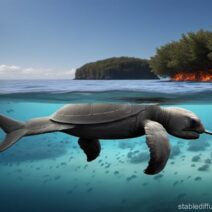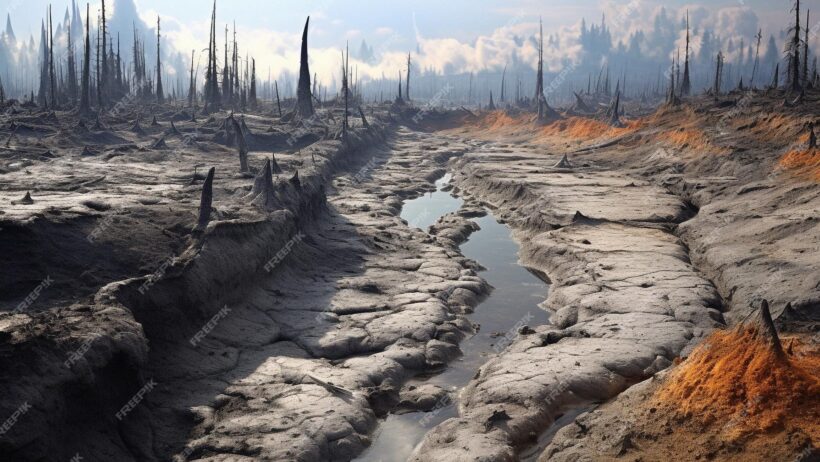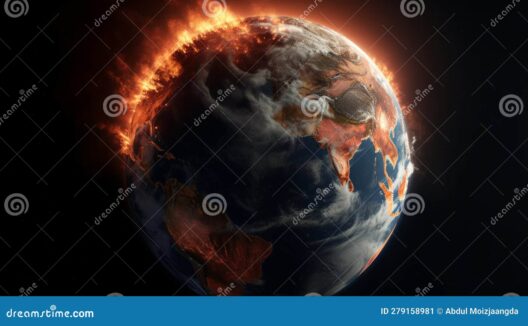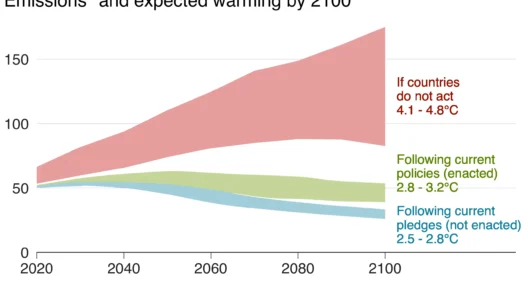The ramifications of climate change manifest in myriad forms, yet few phenomena are as alarming as the melting of permafrost. Permafrost, defined as permanently frozen ground that has remained below 0 degrees Celsius for at least two consecutive years, covers vast expanses of the Arctic and sub-Arctic regions. This frozen frontier plays an indispensable role in regulating the planet’s climate, but as global temperatures rise, it is thawing at an unprecedented rate, presenting dire consequences for both ecosystems and human interests.
As permafrost thaws, it releases significant amounts of greenhouse gases, primarily carbon dioxide and methane. These gases were trapped within the ice for millennia, and their release exacerbates the greenhouse effect, leading to further global warming. Methane, though less abundant in the atmosphere compared to carbon dioxide, is far more potent, posing a formidable threat as it has over 25 times the heat-trapping capacity of carbon dioxide over a 100-year period. This phenomenon creates a feedback loop: warming leads to thawing, which releases gases that then precipitate further warming.
The impact of melting permafrost is not solely confined to the release of greenhouse gases. It also endangers local ecosystems. Numerous species, from mammals to microorganisms, depend on this delicate balance of cold temperatures and frozen ground. As permafrost thaws, the habitat for these species is destabilized, leading to the loss of biodiversity. For many Arctic flora and fauna, the consequences are terminal; disruptions in their habitats could lead to extinction. Polar bears, for instance, rely on stable sea ice to hunt seals, their primary food source, while traditional migratory routes for other wildlife are altered as the landscape shifts.
Moreover, melting permafrost poses threats to human infrastructure. Communities residing in the Arctic and sub-Arctic regions often depend on permafrost for the stability of buildings and roads. As the ground thaws, it can lead to severe structural damage and increased maintenance costs. Roads buckle, buildings tilt, and traditional transportation routes become impassable due to the newly marshy terrain. Not only does this jeopardize the safety of the residents, but it also leads to economic sequestration as supply chains become disrupted.
The socio-economic repercussions extend beyond mere infrastructure. Indigenous communities, whose cultural identities are often deeply entwined with the land, face existential threats. Their traditional knowledge about navigating and utilizing the permafrost landscapes is becoming less relevant as these landscapes transform. The migration of food sources, the melting of culturally significant sites, and threats to traditional ways of life create an unsettling future for these communities. Policymakers must consider the implications of climate change on these populations, integrating traditional ecological knowledge with modern environmental science to find collaborative solutions.
Furthermore, the consequences of melting permafrost reach beyond immediate local effects, impacting global weather patterns. The release of large quantities of greenhouse gases influences atmospheric conditions, potentially altering climate systems across the globe. Studies indicate that the destabilization of permafrost could change the jet stream, leading to erratic weather phenomena, such as prolonged droughts in some regions while others face extreme flooding. The trickle-down effects of these distortions encompass agricultural outputs, water supply, and overall food security on a global scale.
Addressing the challenge posed by melting permafrost necessitates multifaceted approaches. Immediate action must focus on reducing greenhouse gas emissions worldwide. International cooperation is crucial in this endeavor. Agreements such as the Paris Accord aim to unite countries in the global fight against climate change. Innovation in clean energy technologies and carbon capture solutions is paramount. Moreover, policies that incentivize sustainable land management practices can mitigate risks associated with permafrost thawing.
Additionally, adaptation strategies must be employed to protect vulnerable communities and ecosystems. Infrastructure must be designed with climate resilience in mind, incorporating adaptive technologies that can withstand the changing landscape. Investments should particularly focus on educating local populations about the changes they may face and empowering them to participate in decision-making processes that affect their future.
Investing in research to monitor permafrost and understand its dynamics will be vital. The scientific community must prioritize the study of methane release patterns and the broader implications of melting permafrost. Improved models that forecast the consequences of permafrost thaw can aid in developing contingency plans, while also enhancing public awareness around these issues.
In conclusion, the melting of permafrost embodies the complexities of climate change. It serves as both a harbinger of consequences and a catalyst for necessary action. By recognizing the interconnectedness of ecosystems, human communities, and global systems, a more coherent and unified response to climate change becomes possible. This frozen frontier is rapidly evolving, and our responses must reflect the urgent need for proactive measures and innovative thinking to mitigate the looming threats it represents. The time to act is now; the implications of inaction are far too chilling to contemplate.




